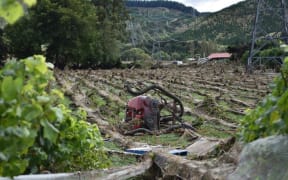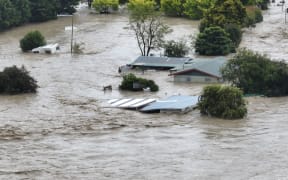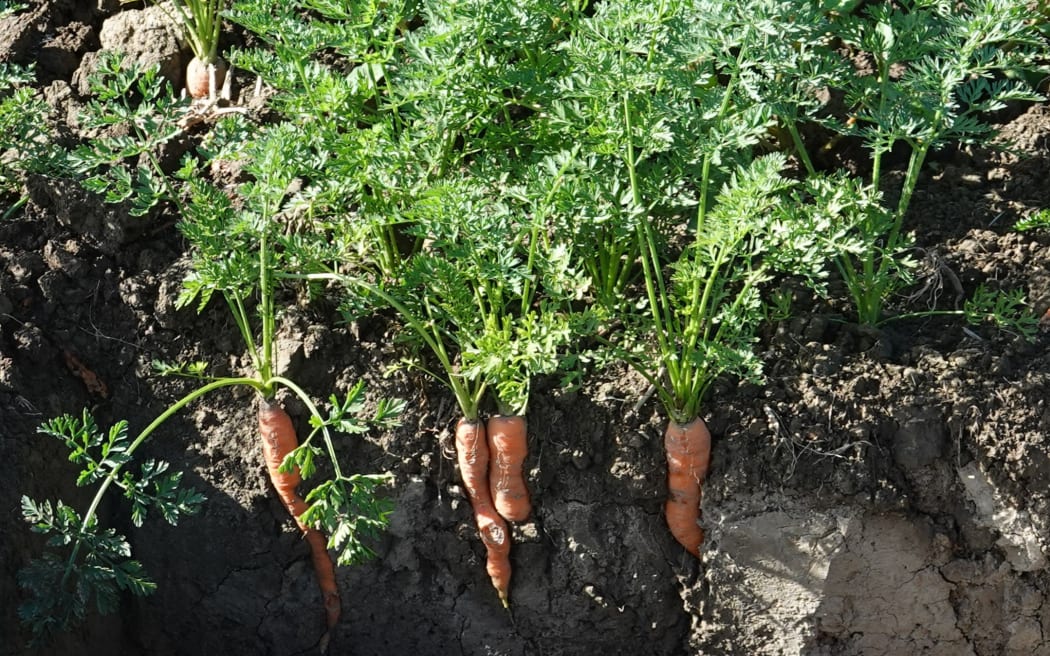
The bend in the carrots shows they're searching for the nutrients they need, but are struggling to find them. Photo: RNZ / Lauren Crimp
The thick blanket of silt cloaking productive land across Hawke's Bay might not be as suffocating as once thought, with some some vegetable crops pushing through the barrier.
Horticulturalists are grappling with growing on silt-ridden land after Cyclone Gabrielle, so Plant and Food Research is on a mission to help them find out what crops could actually flourish, and helping their businesses do the same.
NH Packing operations manager Hamish Thomas was growing on the company's Swamp Road land in rural Hastings - smack in the middle of the Ngaruroro and Tūtaekurī rivers, which are about four kilometres away either side.
When they burst, the land was inundated, leaving a thick layer of silt in its wake.
"We've looked at this property and said, well, the cost is too high to go and try and remove it," said Thomas.
"So do we look at trying to use this as a positive, and in years to come, this land could be just as productive as it was."
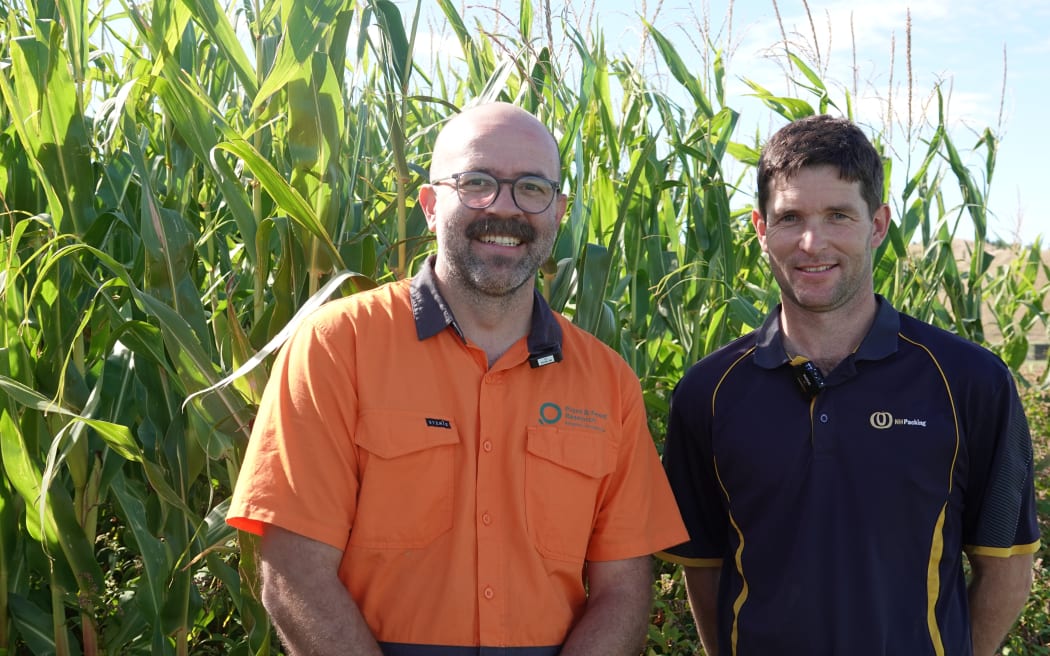
Plant and Food Research scientist Dr Eduardo Dias de Oliveira and NH Packing grower Hamish Thomas in front of a healthy maize crop. Photo: RNZ / Lauren Crimp
That's the nut Plant and Food Research scientist Dr Eduardo Dias de Oliveira is trying to crack.
The NH Packing land has become a testing ground for him to help the industry figure out how to work with silt and get back on their feet faster.
"If you have all the money in the world and you want to scrape it off, go for it - but, nobody does, right?" Dias de Oliveira said.
"So how can we make decisions that are the best, with what we have ... and maybe just use the silt to our advantage."
Growing has been a guessing game for many, he said.
"We wanted to test and do the experiments so they didn't have to.
"Otherwise they would have to do the tests themselves, and use their own money, time, without knowing if they were going to get any crops back."
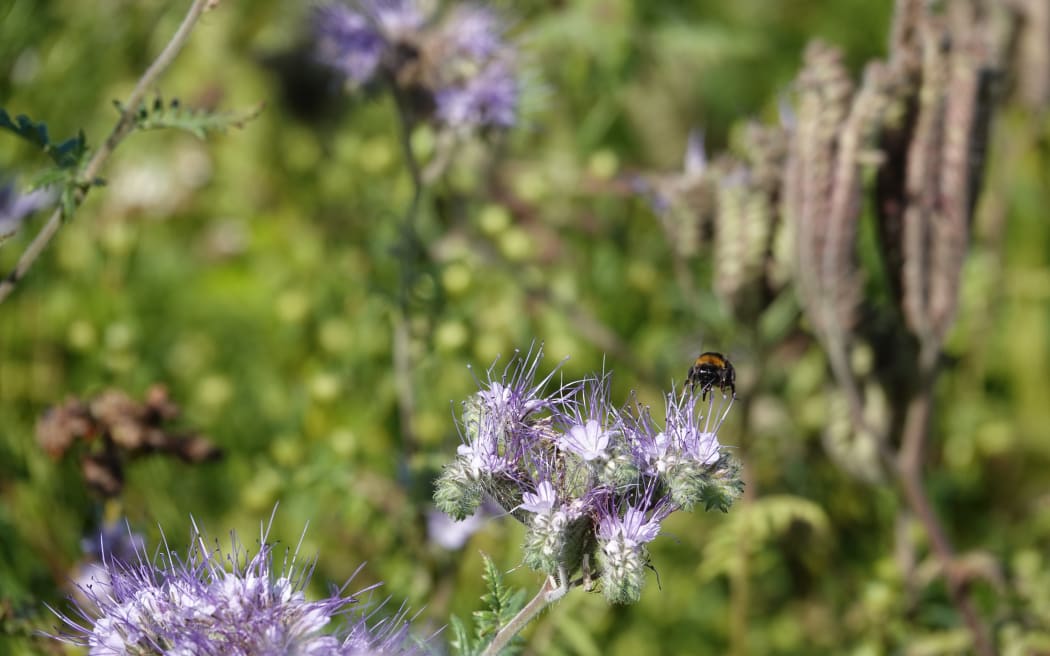
The scientist and grower were happy to see an abundance of bees pollinating the crops. Photo: RNZ / Lauren Crimp
A range of crops - including maize, broccoli, peas and carrots - were planted in varying depths of silt, between 15cm and 50cm.
So far, the maize was thriving.
"Maize - being a crop with a big seed size and big root systems - is the crop that is looking better, more promising, in these first stages," Dias de Oliveira said.
Broccoli was looking good, too - but peas and carrots were not faring as well, struggling to push their roots through the silt to reach the soil below.
"Especially carrots, they need a finer soil structure to grow and emerge, and it looks like the silt was too coarse for them," he said.
All that knowledge would be gold for growers, said Thomas.
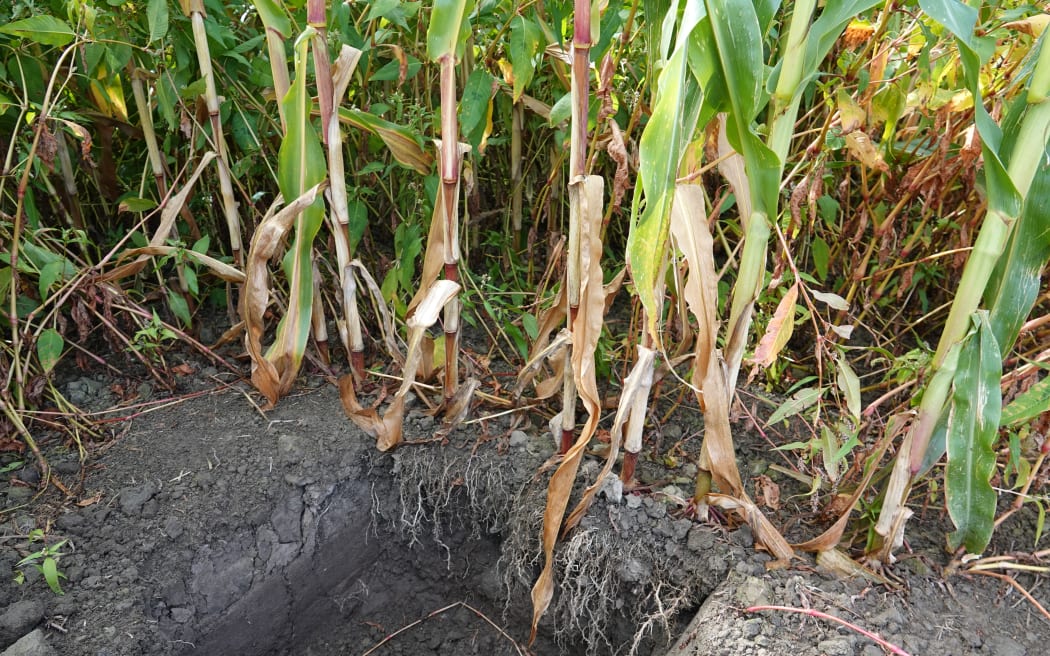
The maize has managed to push its roots through the layer of silt to the soil below. Photo: RNZ / Lauren Crimp
"It's definitely good to see what's able to be grown in what we thought was going to be pretty unproductive land.
"Getting some information to understand what that then means from a commercial scale yield, quality, I think that's going to be really important."
It would also prepare growers for the next Gabrielle - helping them understand what they might be able to plant immediately, and potentially avoid the costly and time-intensive process of trucking silt off the land.
The final harvest and results are expected by the end of March.
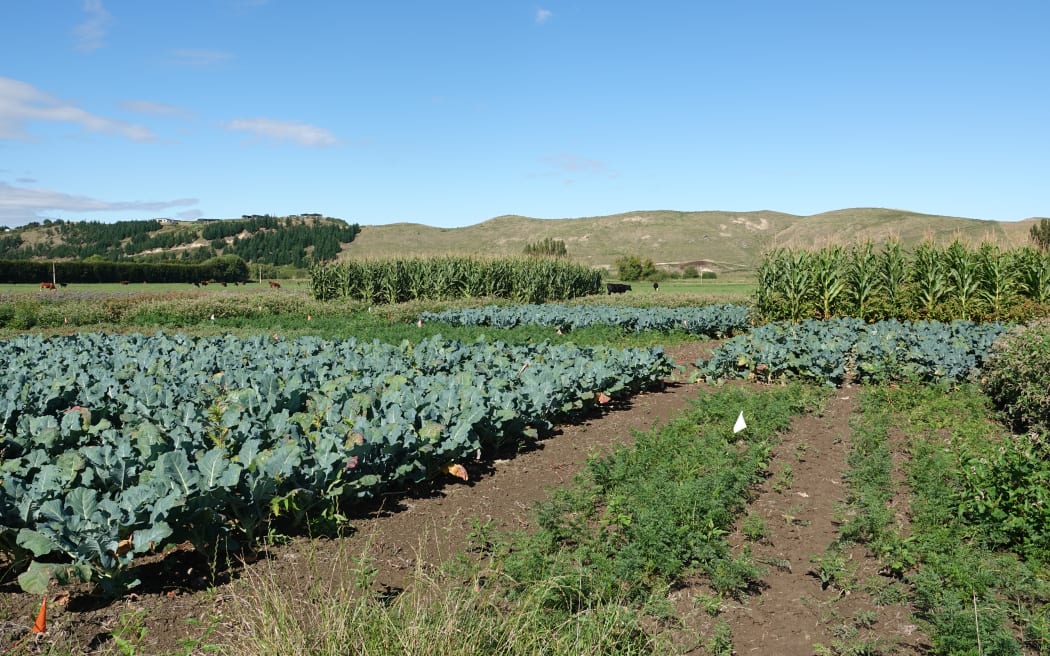
Broccoli, carrots, peas, and maize have been planted in a bid to find out if crops could thrive in silt-ridden land. Photo: RNZ / Lauren Crimp

